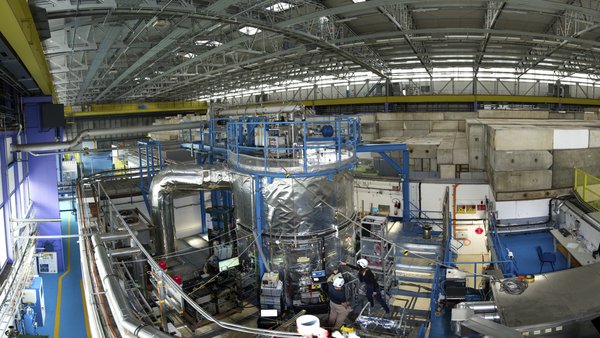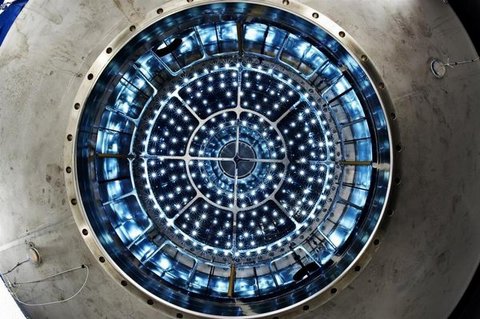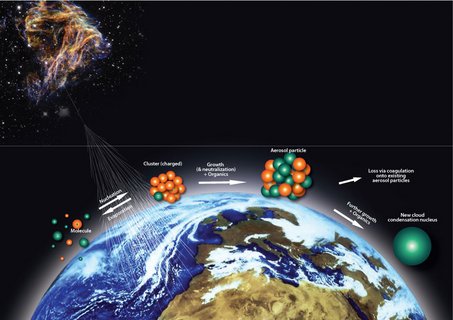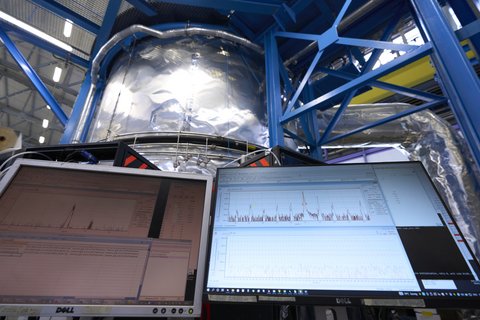Approach:
As part of the Cosmics Leaving Outdoor Droplets (CLOUD) experiment, a large stainless steel cylinder (the so-called “cloud chamber”) is used to study processes of solar nucleation and growth at atmospheric concentrations. It has numerous connections for electronic or optical measurements and sampling as well as transparent electrodes and UV irradiation to simulate photolytic reactions similar to those of sunlight. With the help of the cloud chamber, possible relationships between galactic cosmic rays and the formation of clouds can be investigated for the first time with the aid of a high-energy physical accelerator.
Background:
Cosmic rays are charged particles that influence the Earth's atmosphere from space. Studies suggest that they can influence cloud cover either by forming new aerosols (tiny particles suspended in the air that can grow into nuclei for cloud droplets) or by directly influencing the clouds themselves. Clouds have a strong influence on the Earth's energy balance. Measuring the underlying microphysics under controlled laboratory conditions is important for a better understanding of the atmospheric aerosol and is key to identifying the possible link between cosmic rays and clouds. Among other things, microphysical aerosol and cloud processes such as aerosol particle formation, aerosol growth, cloud droplet activation and cloud droplet freezing are studied in the CLOUD chamber.
Organization:
The project is based on the work of an interdisciplinary team of 17 different institutes from 9 countries, including physicists, chemists and experts in the field of cosmic rays and particle physics. TROPOS is primarily responsible for planning and carrying out the cloud microphysics experiments in the CLOUD chamber and for investigating the activation and freezing behavior of the particles produced in the chamber.




